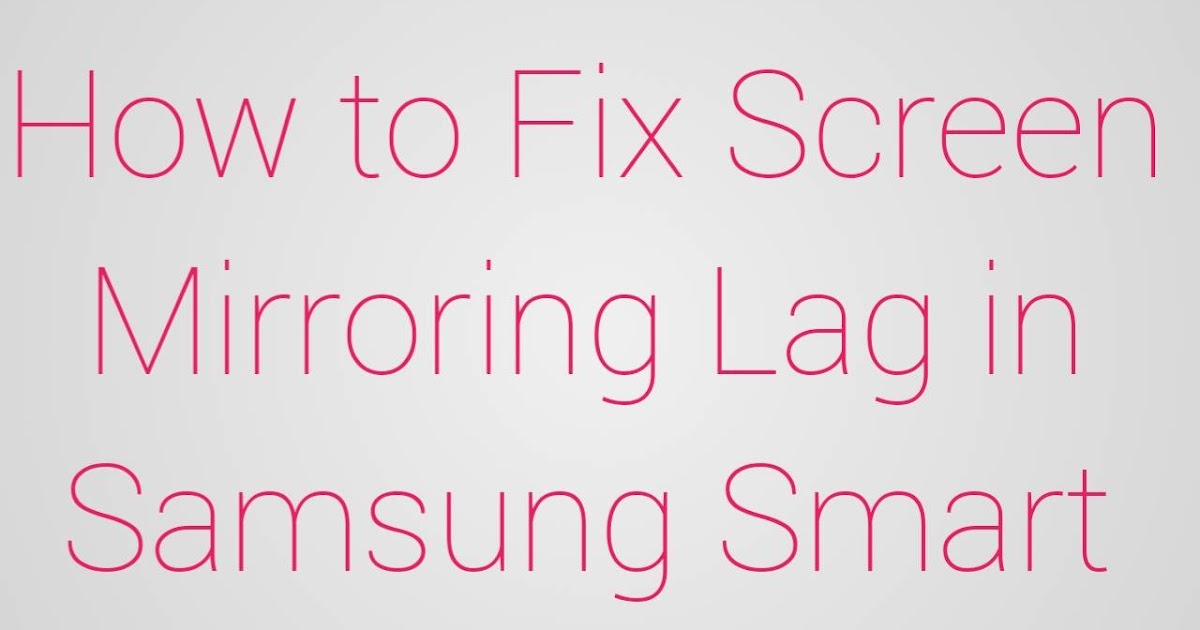

The Q70T scored a 2.4, Q90 registered a Delta-E rating of 1.5. A smaller score is ideal (0 is perfect), and the Samsung Q80T earned a 3.9, which is poor compared to other sets in the company’s lineup. We measure TV accuracy with a Delta-E rating. The Samsung Q70T QLED TV reached just 548 nits, too. The Samsung Q60T QLED TV, a set two tiers below the Q80T, hit only 418 nits, for example. Our Tom’s Guide TV tests registered a maximum brightness of 681 nits, which seems far off from the company’s claims but is a realistic result for comparison. Samsung says the Samsung Q80T has Quantum HDR 1500, meaning the set could reach a peak brightness of 1500 nits. Eco Solution adjusts TV's brightness level automatically based on surrounding ambient light to reduce power consumption. We also disabled Eco Solution options, which we would use in a normal scenario but impact the TV’s picture during testing.
#MIRROR FOR SAMSUNG TV LAG MOVIE#
Still, we used ‘Standard’ for most testing, while the tempered brightness and contrast of the Movie mode makes it a favorable viewing option for dark rooms. Luckily, it has thorough calibration settings. The Samsung Q80T QLED 4K TV benefits from very few preset picture modes compared to other sets. Samsung Q80T QLED TV review: Test results When I reviewed an OLED in this same room, I could only gauge picture performance at night because sunlight compromised the picture brightness too severely. I didn’t see any artifacts or graininess when watching the HD discs of the same movies, and I’d even say that the Q80T’s upscaling maintains picture depth more than the Sony OLED.Īn added perk of the Samsung Q80T QLED 4K TV is an antireflection layer that makes it a breeze to watch in bright rooms with windows, where I happened to set this TV up for testing. Within the Q80T, Samsung’s 4K Quantum upscaler uses AI to enhance image interpolation and insert details you won’t find on regular HD content.

Of course not all material comes in 4K like the Spider-Man and Star Wars discs we used for testing. As the aspiring Jedi practically flew through her obstacle course in the Ajan Kloss jungle, the drapery details of her caped getup and curvy, orange details of a tailing BB-8 droid remained crisp. Just as Rey does to restore balance to the galaxy, the set rose to the occasion. Rise of Skywalker similarly gave the Q80T a challenge in motion handling. I think the Sony A8H Bravia OLED TV does it better, but the Samsung Q80T holds its own with as deep blacks as any LED/LCD set can offer. Many sets struggle with such speedy transitions, especially while maintaining cinematic contrast. Upon discovering the very-much-alive Emperor Palpatine, a strobe effect flashed the screen between dark and intense bright. Enter Kylo Ren, cautiously wading through Exegol with his crossguard lightsaber outlined by an eerie halo. Moving on to one of my favorite scenes for testing contrast capabilities, I turned on Star Wars: Rise of Skywalker. Parker, Miles Morales and Spider-Woman Gwen Stacey used their web-shooters to swing away from Doctor Octopus’s laboratory, the autumn foliage surrounding them looked artistic as an actual comic book does. In Spider-Man: Into the Spiderverse, I could see the color complexities and subtle variations between each superhero's suit, even though several wore red or black. QLED is usually strong when it comes to robust colors and contrast, and that’s more or less what I experienced during anecdotal testing.
#MIRROR FOR SAMSUNG TV LAG FULL#
With its quantum-dot-enhanced display, full array backlight and an intelligent Quantum processor, the Samsung Q80T promises a superb performance. One of them is rated HDMI 2.1, which supports features like eARC, Auto Low Latency Mode and Variable Refresh Rate. You’ll have 2 USB ports and 4 HDMI ports. Otherwise, the Q80T has a more traditional port array found in a concave portion of the set’s backside. If you plan to hook up multiple entertainment peripherals to your new TV, it might be worth pricing out the Q90T for the One Connect box’s convenience.


 0 kommentar(er)
0 kommentar(er)
